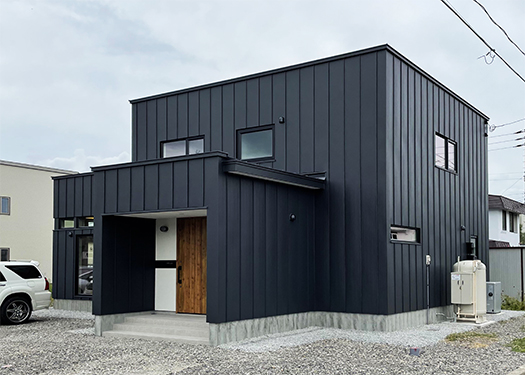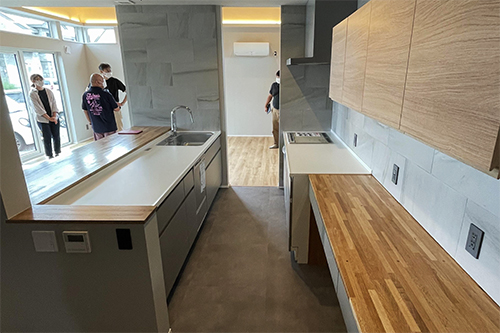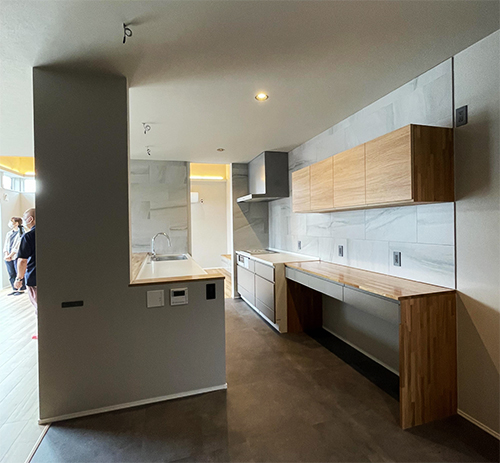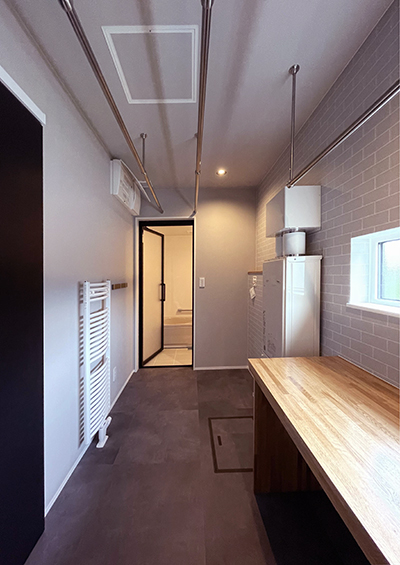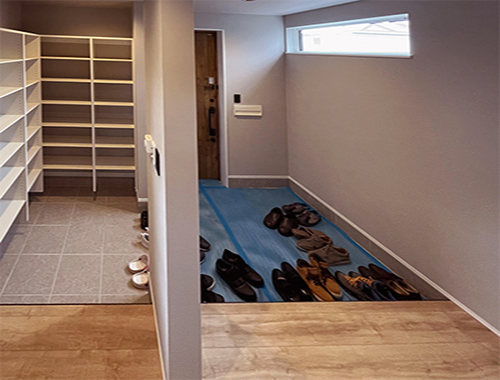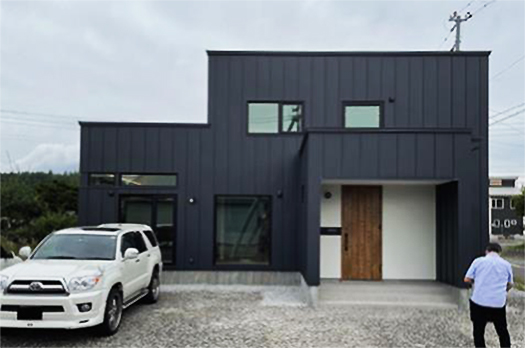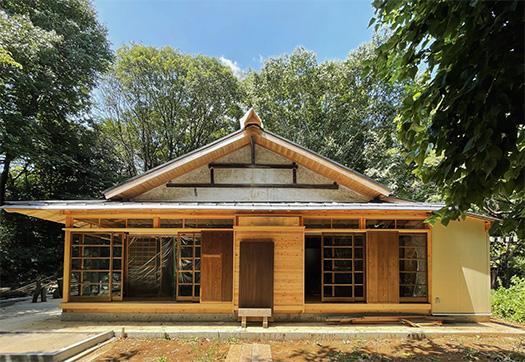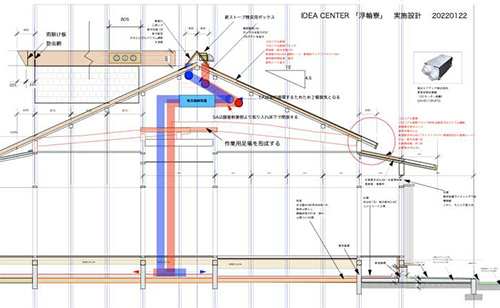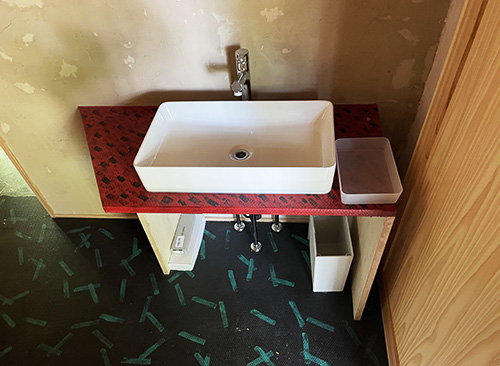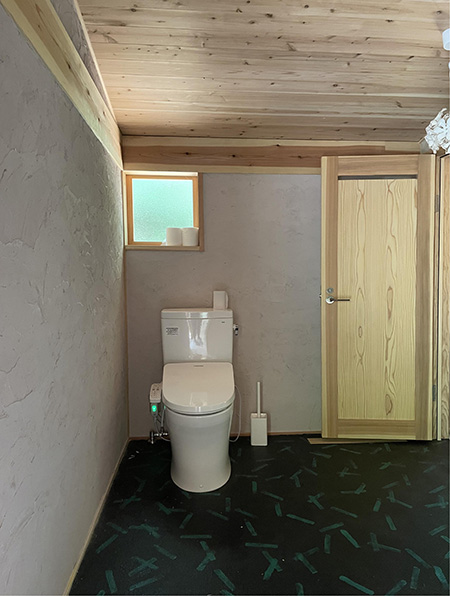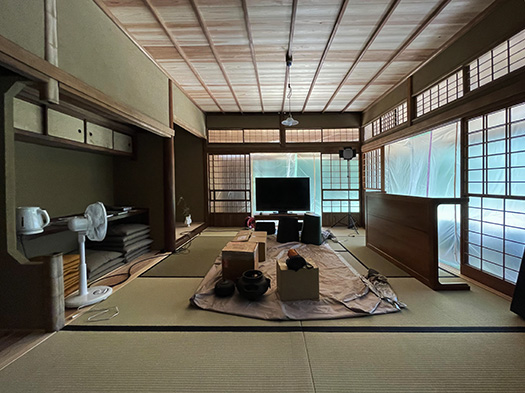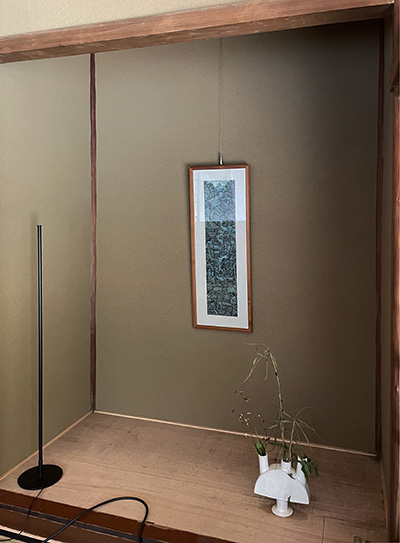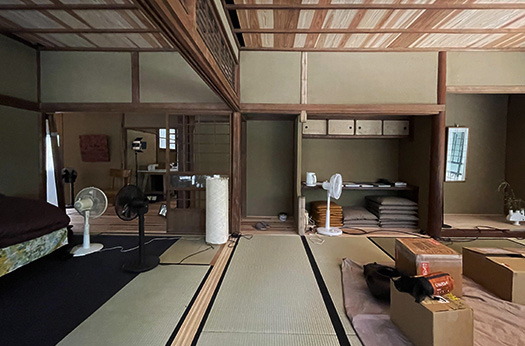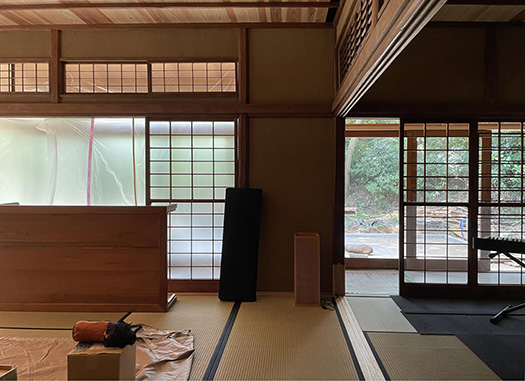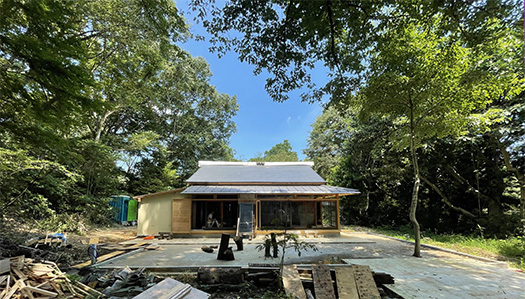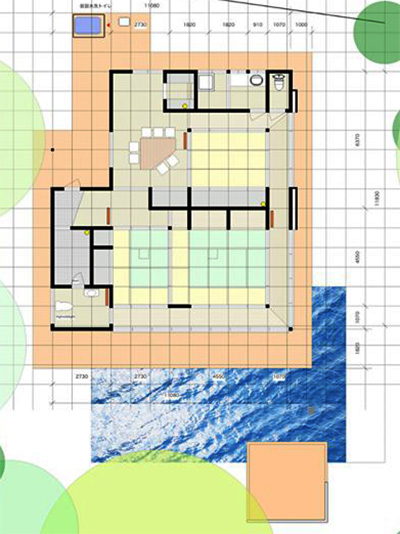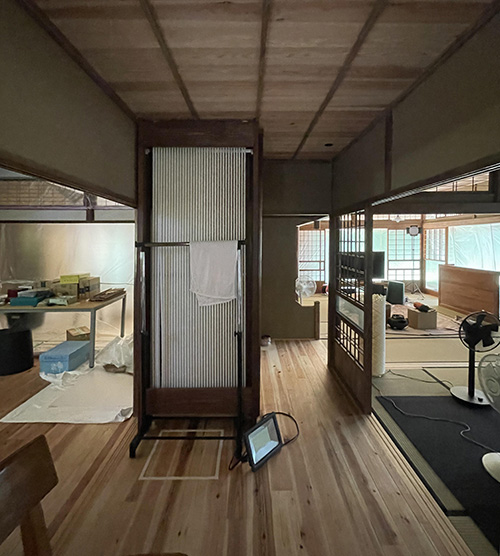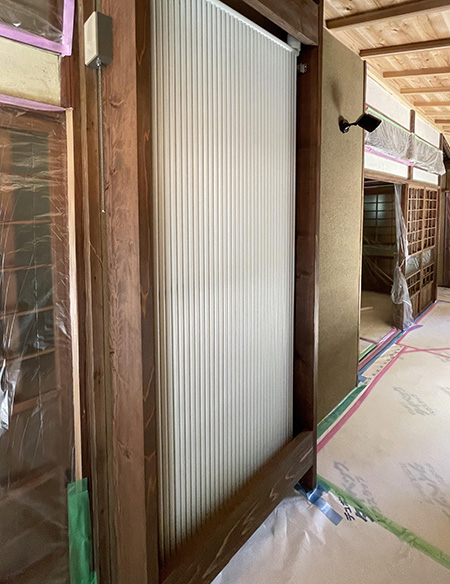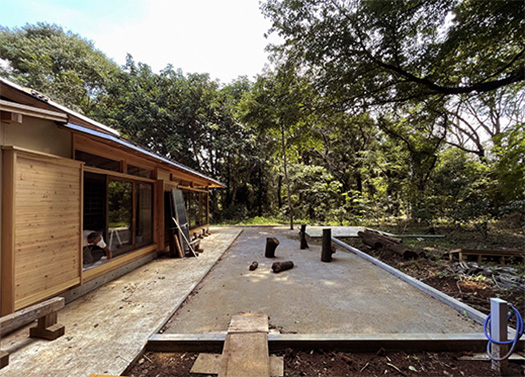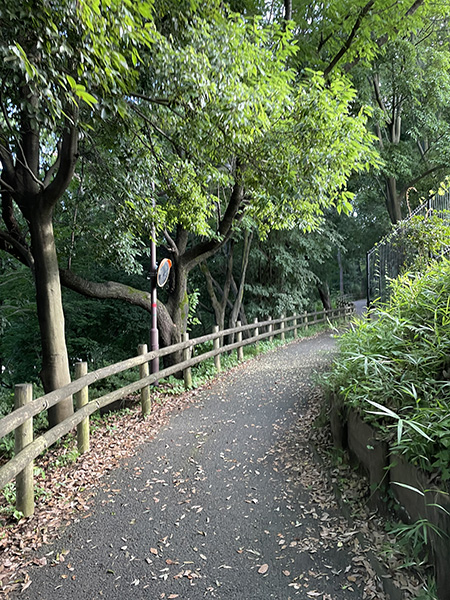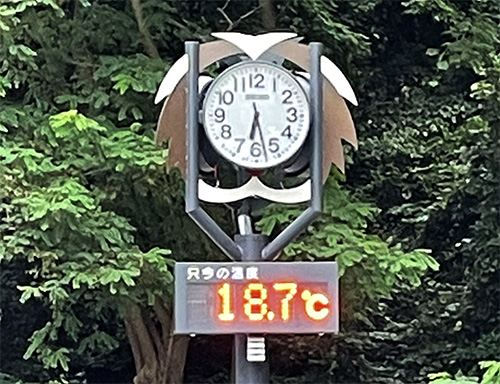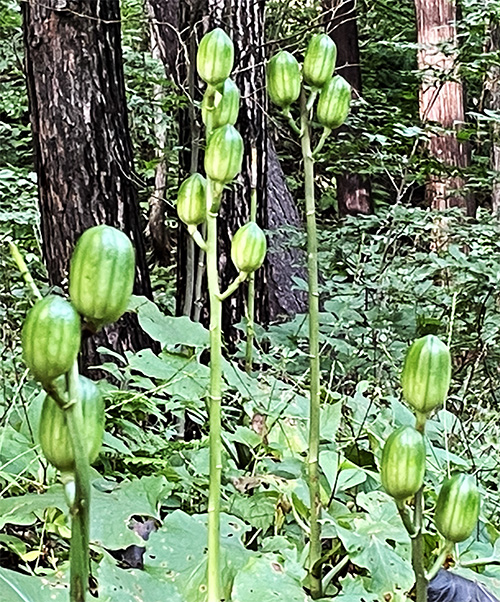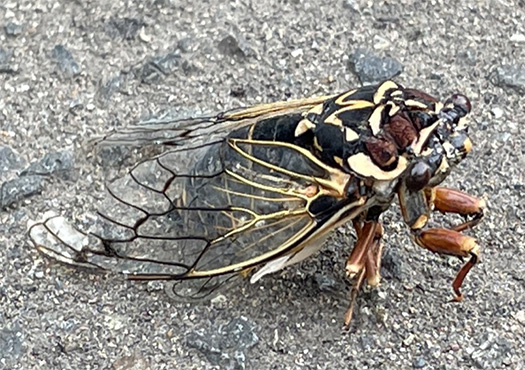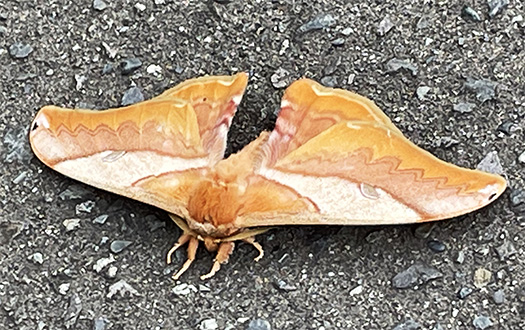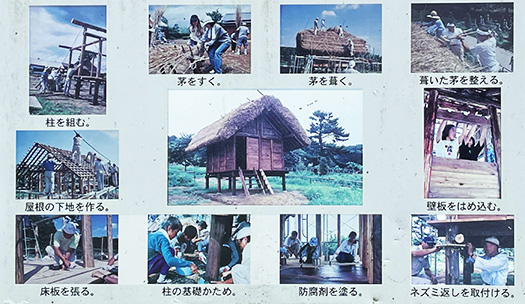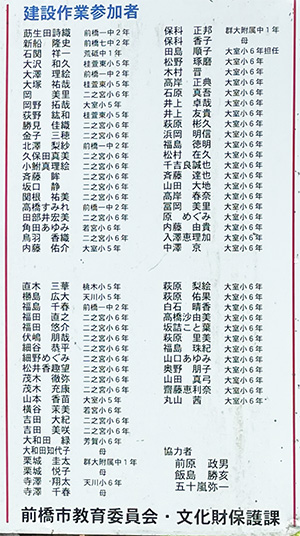

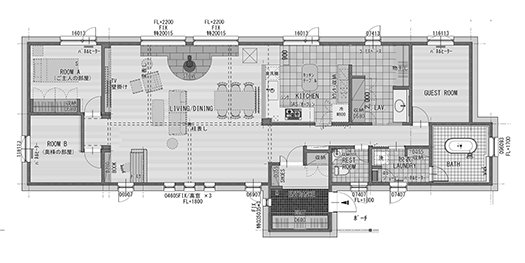
旭川近郊・東川は近年、本州地域からの「半移住」的発展が語られている。
感染症の拡大によってテレワークが日常的に普遍化して
仕事の環境としてとくに首都圏中心地の利便性優先思想が減衰し、
それに替わって自然環境の豊かな地方でしかも交通インフラがある地域、
という発展要因が注目され始めている現実。
東川地域は、旭川空港からのアクセスで首都圏からの交通は
確保されている。なんと言っても豊かな自然環境に没入できることから
注目度が高まってきているのですね。
いまワークとバケーションの合体造語であるワーケーションが注目されている。
地域に本社を置く「北の住まい設計社」さんは、家具製作などで
全国へのアピールもされているので、そういうユーザーとの関係性も高く、
最近は本社近くの自然林地域に自然最優先のような「住宅地」を開発している。
この住宅はそうしたもののひとつ。
施主さんは本州地域の方であり、不定期にこの建物を使うけれど、
管理保全なども同社に依頼しているのだということ。
敷地は周辺道路のやや高台に位置していて無舗装道路。
自然の起伏がそのままに展開しているので、
いわゆる大規模住宅地開発行為は行われていないと推測されました。
建物は平屋で周辺の樹木に対してその高さを対応させている。
道路面からはやや下った位置に建物配置。
屋根雪に対して「雪止め」を付けて堆雪屋根としている。
上の写真はメインルームの様子。
東川の自然林の眺望に対して、薪ストーブが端正に配置されている。
周辺の森は松と落葉樹の混交林。
四季折々に北海道らしい表情を見せてくれている。
交通ネットワークが拡大し飛行機の便が飛躍的に向上したことで
従来とは違った首都圏地域からの半移住というニーズが生まれているのです。
このメインルームの佇まいには求まられている「癒し」が端的に表現。
こうしたニーズへの対応には首都圏大手デベロッパーなどが
市場ニーズ把握を通してこれまでは占有的だったけれど、
北海道では地域の作り手がこのように優勢に対応できている。
まだニーズの総量が大量生産・大量販売レベルではないことを表している。
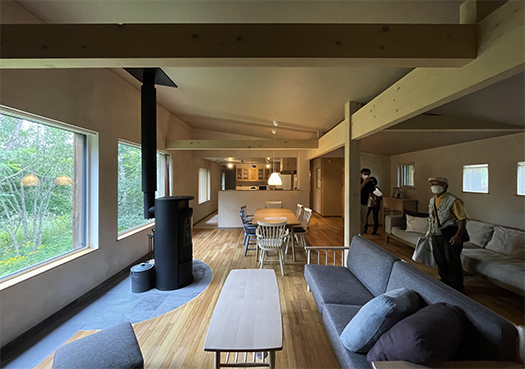
また、今後そういうニーズが拡大していっても
住宅技術、デザイン表現力どちらをとっても
大量販売型の住宅メーカーに強い占有力が働くとは思えない。
マーケティング視点からはむしろデベロッパーが地域ビルダーと手を組む可能性。
小さいけれど、やや未来的なニーズに対して市場が今後どう展開するか。
北海道の各地域では今後ともこのような住宅市場が拡大する可能性がある。
いまは限定的な動きだけれど、北海道各地域の豊かな自然の魅力は強い。
ニーズ自体が個別的・個性的に展開するのではないか。
たしかにワーケーションには「働き方改革」的な要素もあり
発注者の企業体も個性的な空間表現を望むと思われる。
北海道として今後大いに期待していきたい動向ですね。
English version⬇
Asahikawa 2022 House Building Exploration-3] Asahikawa Suburbs, Higashikawa “Work Vacation” Development Asahikawa 2022 House Building Exploration-3
Work+vacation is emerging as the leading edge of telework for companies and individuals in the Tokyo metropolitan area. The need for individualization of warm rooms and a sense of nature. The need for warm rooms and a sense of nature.
In recent years, the Asahikawa suburbs and Higashikawa have been described as developing in a “semi-migrant” fashion from the mainland area.
The spread of infectious diseases has made teleworking universal on a daily basis.
The idea of prioritizing convenience, especially in the center of the Tokyo metropolitan area, as a work environment has been waning, and the rich natural environment has replaced it.
Instead, regions with a rich natural environment and transportation infrastructure are beginning to attract attention.
In the Higashikawa area, the Asahikawa region is a prime example.
The Higashikawa area is accessible from Asahikawa Airport, and transportation from the Tokyo metropolitan area is
Asahikawa Airport. The Higashikawa area has been attracting more and more attention because of its rich natural environment, and the fact that it can be immersed in a rich natural environment.
This is why it is attracting more and more attention.
Nowadays, workcation, a coined word combining work and vacation, is attracting attention.
Kita no Sumai Sekkeisha,” a company headquartered in the region, has been making furniture and other products that are appealing to the whole country.
The company has a strong relationship with such users, as it also appeals to the whole country through furniture production and other activities.
Recently, the company has been developing a “residential area” in a natural forest area near its headquarters, where nature is given top priority.
This housing is one of those.
The client is from the Honshu area and uses the building on an irregular basis.
The site is located on a slightly elevated plateau on the surrounding road.
The site is located on a slightly elevated site with no paved road.
The natural undulations of the land have been left untouched, so there is no need to develop the site in a large scale residential area.
We assumed that no so-called large-scale residential development activities had been carried out on the site.
The building is one-story and its height corresponds to that of the surrounding trees.
The building is located slightly below the road surface.
The roof is designed as a composting snow roof with a “snow stop” for snow.
The photo above shows the main room.
The wood stove is neatly placed against the view of the Higashikawa natural forest.
The surrounding forest is a mixed forest of pine trees and deciduous trees.
The forest shows us the typical expression of Hokkaido in each of the four seasons.
With the expansion of the transportation network and the dramatic improvement in air travel
A need has arisen for semi-migrants from the Tokyo metropolitan area, which is different from the past.
The appearance of the main room is a simple expression of the “healing” that is being sought.
In order to respond to these needs, major developers in the Tokyo metropolitan area and others have been working on the development of semi-migratory apartments.
In the past, they have been possessive in their understanding of market needs, but in Hokkaido, they are now taking the lead in this way.
In Hokkaido, however, local makers have the upper hand in responding to these needs.
This indicates that the total volume of needs is not yet at the level of mass production and mass sales.
And even if such needs expand in the future
I don’t think that mass-market homebuilders will have a strong hold on the market in terms of either housing technology or design expression.
I don’t think that mass-market homebuilders will have a strong position in the market.
From a marketing perspective, there is a possibility that developers will join forces with regional builders.
How will the market develop in the future to meet the small but somewhat futuristic needs of the market?
There is a possibility that this type of housing market will continue to expand in each region of Hokkaido.
Although limited at the moment, the rich natural attractions of the various regions of Hokkaido are strong.
The needs themselves may develop in individual and unique ways.
Workcations may indeed be an element of “work style reform,” and each corporate entity may also have its own unique space.
It is likely that each corporate entity would like to see unique spatial expressions.
This is a trend that we in Hokkaido have great expectations for in the future.
Posted on 9月 5th, 2022 by 三木 奎吾
Filed under: 「都市の快適」研究, 住宅取材&ウラ話 | No Comments »


